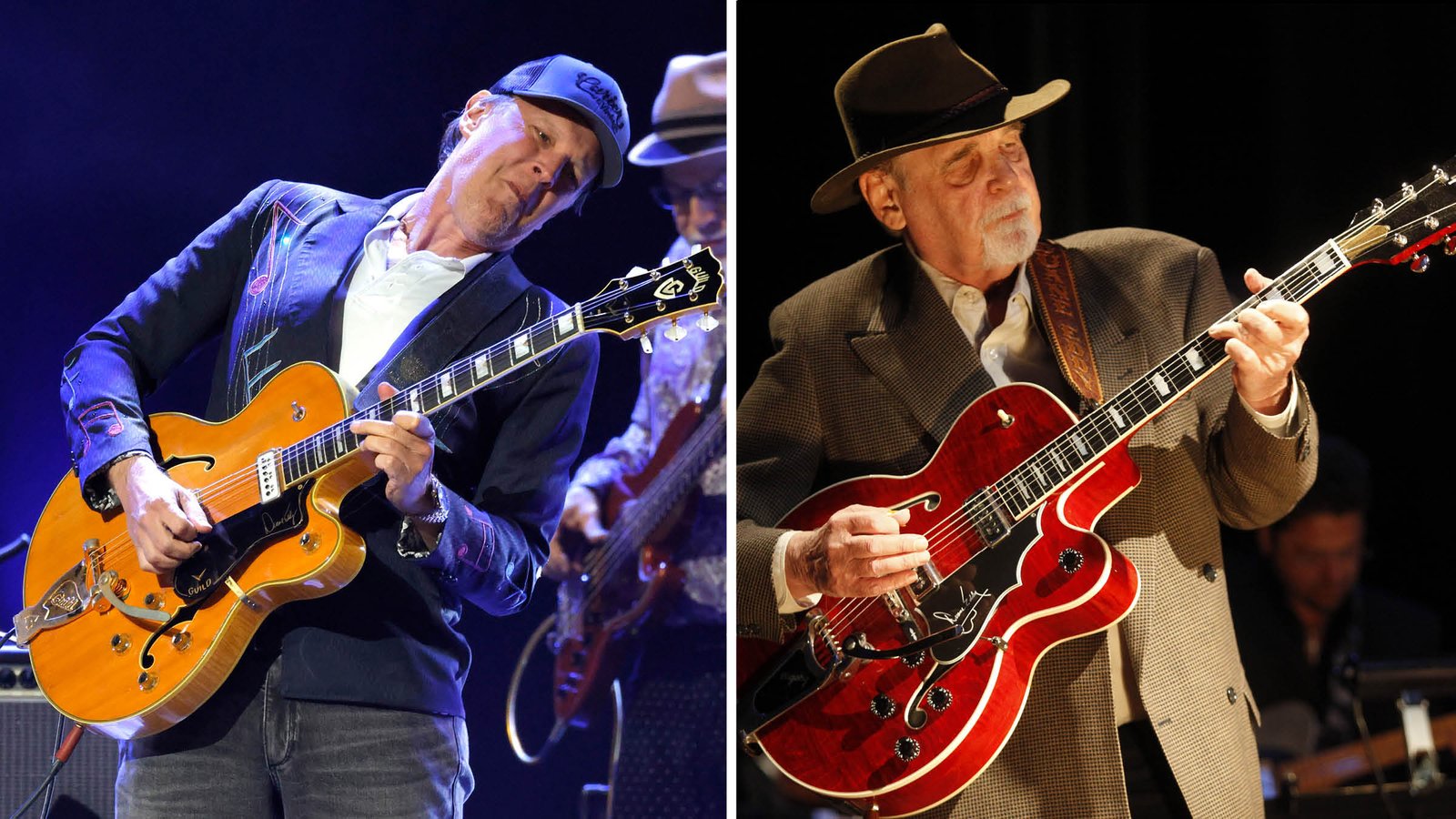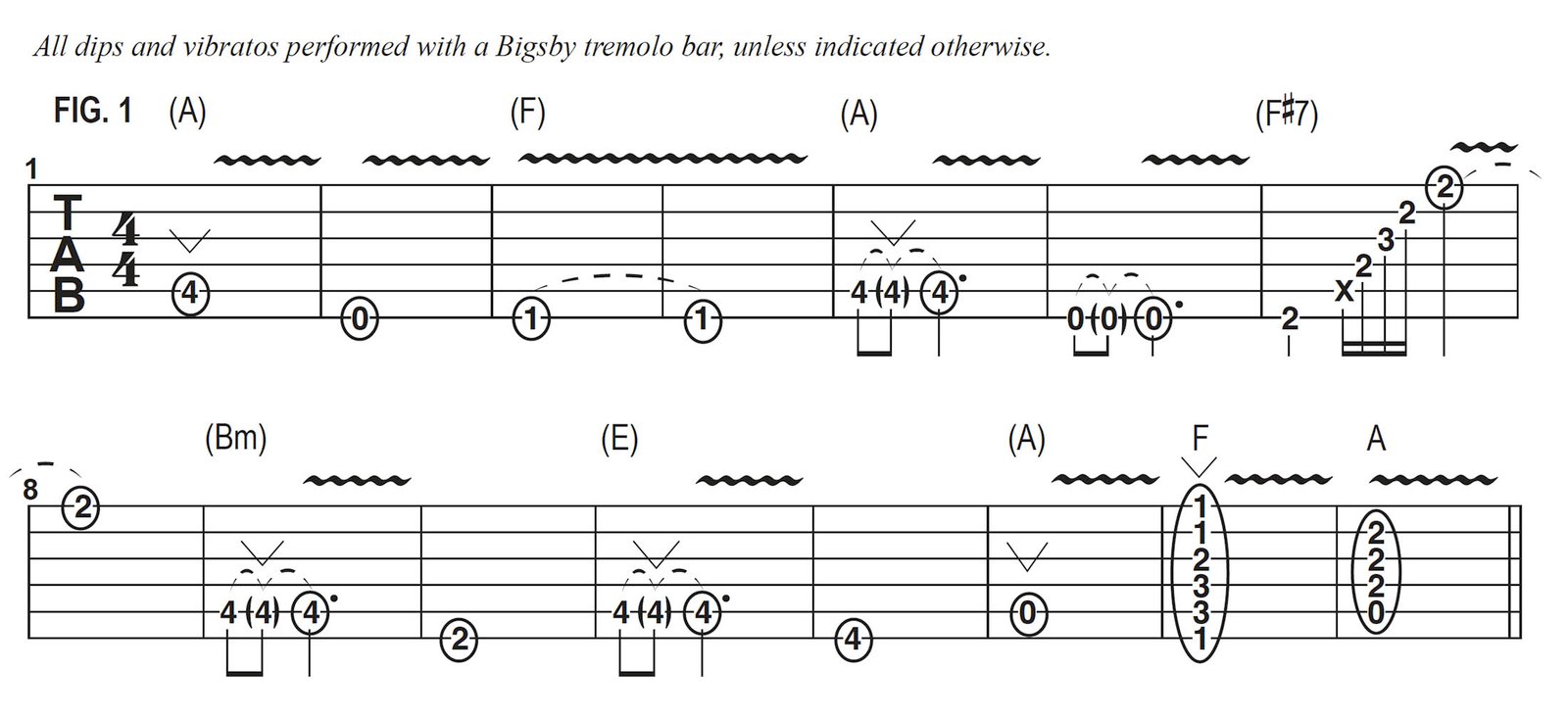
I recently had the honor to pay tribute to the legendary Duane Eddy, the “Titan of Twang” who passed away on April 30, 2024, at age 86.
Duane was a wonderful guy, and it’s testament to one’s life and legacy when A-list players like Peter Frampton, Albert Lee and Vince Gill show up in Nashville with Gretsch guitars, Eddy’s signature, to celebrate your music at a tribute concert.
Eddy recorded some of the most important and enduringly popular instrumental guitar music between the late ’50s and early ’60s, selling 12 million albums by 1963 with hits like Rebel Rouser, Peter Gunn and Because They’re Young.
I got to play two songs for the event, Bye Bye Blues and Three-30 Blues. I wanted to do it right, so I showed up with a Duane Eddy Guild guitar from 1963 and a Gretsch 6120 from 1956, which he was more associated with, but he did use Guilds as well, fitted with DeArmond pickups. The guitar I’m using for this lesson’s video is a 1960 Gretsch 6120 with Filtertron pickups, but it will do the job very well.
Additionally, your guitar must have a “5-speed transmission” Bigsby tremolo arm if you hope to do justice to Eddy’s distinct sound. Also, I like using flatwound strings with these instruments, which give them a very round sound, almost like a compressor, plugged straight into a Fender amp with lots of reverb and vibrato.
That’s how he did it! There were no tricks or magic boxes involved – all you need is a twangy guitar sound.
Joe Bonamassa: The Great Duane Eddy | How I Paid Tribute to the Titan of Twang – YouTube

Figure 1 is a melody along the lines of Bye Bye Blues, with held notes treated with Bigsby dips and vibratos and ringing over a fairly simple chord progression.
Notice that I’ll often pick a note, add a tremolo arm dip and return followed by a subtle vibrato shake.

My approach in going for the Duane Eddy sound is to pick all of the notes down by the bridge, as in Figure 2. Once the notes or chords are ringing out, I’ll then apply the Bigsby arm movement. Bigsbys are nothing like Fender-style vibrato units in that the sound is very different and also very distinct.
Figure 3 offers a longer example demonstrating the Bigsby’s signature qualities.

One of the more popular songs I do is Dust Bowl, for which I wrote a riff in honor of Duane Eddy. I needed a theme at the head of the tune, and the main rhythm figure, shown in Figure 4, is based on a repeating Am arpeggiated figure, for which all of the notes are sustained.
Figure 5 illustrates the Eddy-inspired Dust Bowl theme. This simple lick outlines Am7 with the notes A, C and G, followed by the 6th, F#, treated with Bigsby vibrato, which lends drama to the melody. A Bigsby dip is added on the E note at the end of the phrase as well.
Duane Eddy was a great blues player too, as heard on Three-30 Blues.

Figure 6 is a five-bar phrase along the lines of what Duane plays on this track, with single-note phrases based on the G major triadic tones G, B and D. with the inclusion of the flatted 3rd (b3), Bb, the 4th, C, and the 6th, E. The phrase ends with a nice Gdim voicing (G, Bb, Db) that slides up to the G major triad.
- This article first appeared in Guitar World. Subscribe and save.


